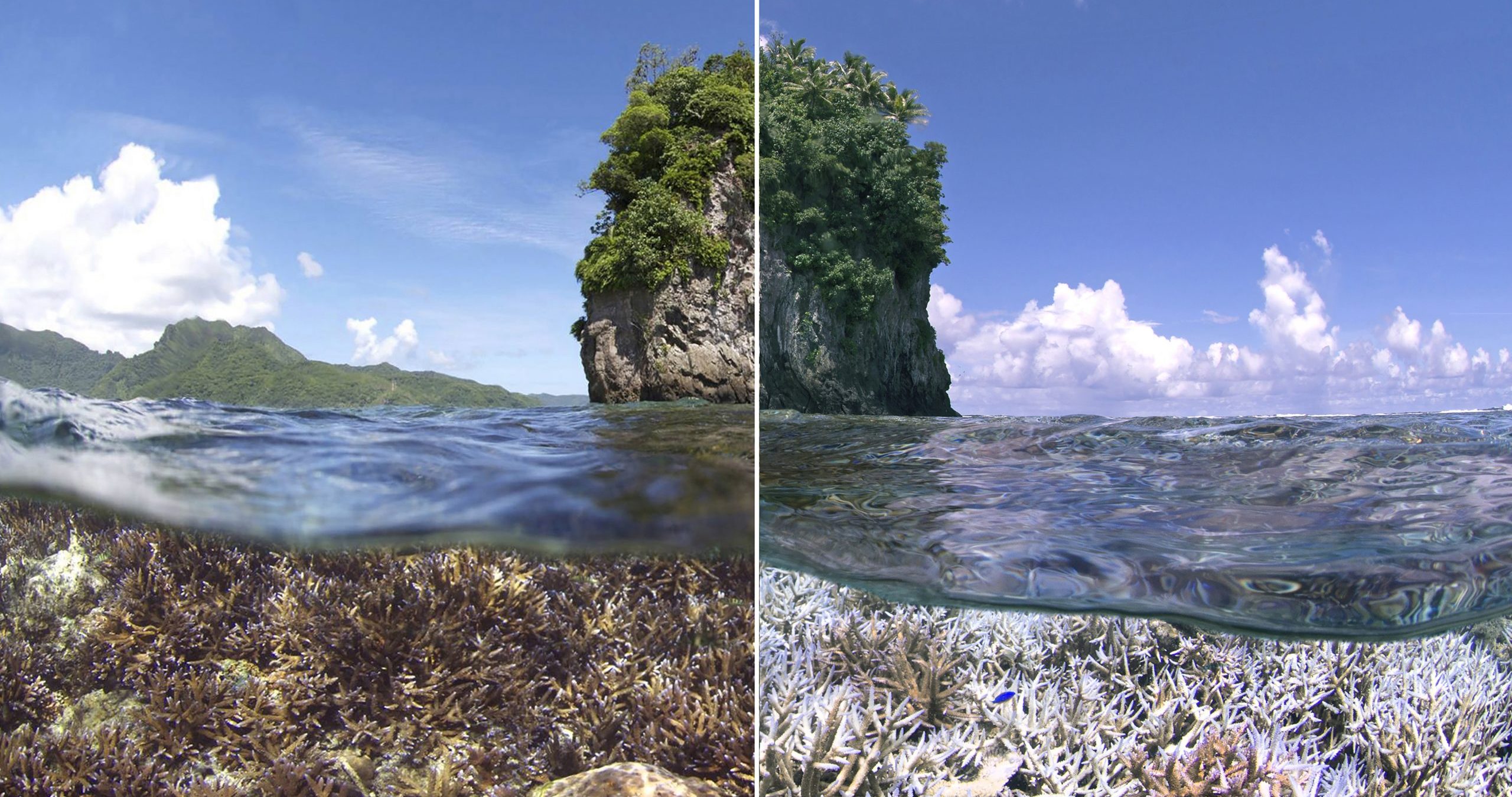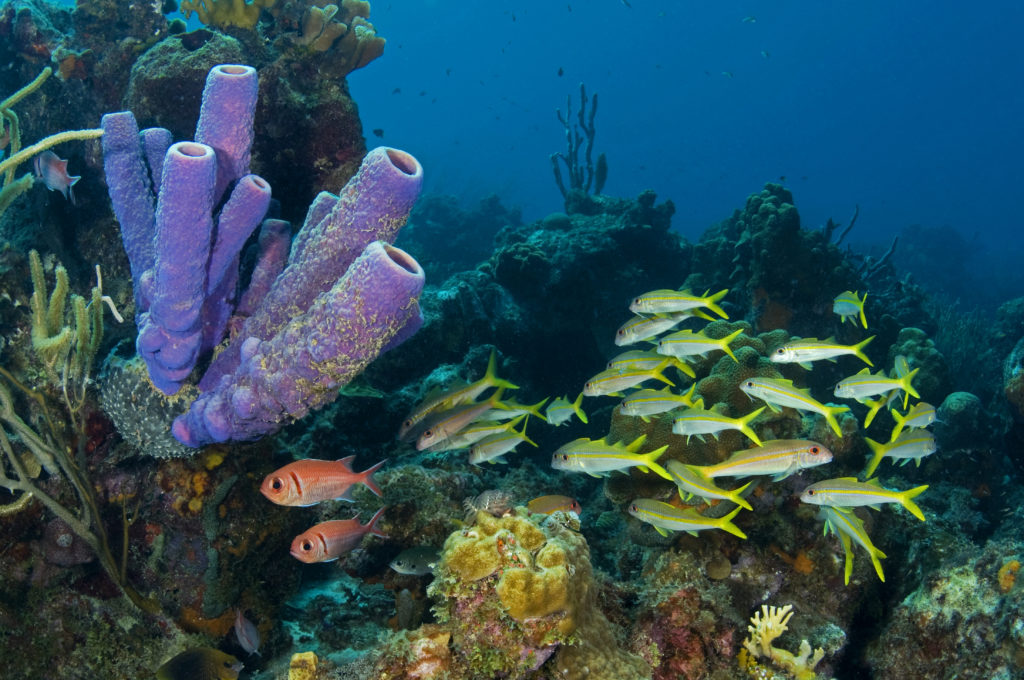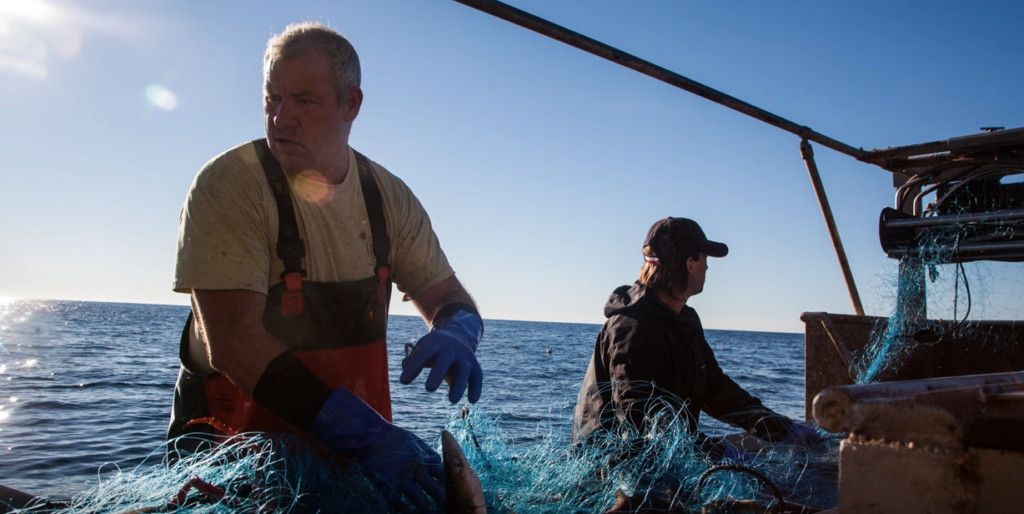The issue
CORAL REEFS ARE VANISHING AT AN ALARMING RATE
Between 2014 – 2017, Chasing Coral captured the most severe bleaching event in recorded history. During these years, 75% of corals suffered or died from heat stress brought on by climate change. It is predicted that if nothing changes, by 2034 there will be severe bleaching events every year, and by the end of the century every reef in the world will bleach.

Rainforests of the sea
While coral reefs only occupy a tiny fraction of the ocean floor, they are one of the most important and diverse ecosystems in the world, with 1/4th of the marine creatures we know and love depending on them in some way. More than 500 million humans also depend on healthy reefs for food, income, and to protect our coastlines from tsunamis, hurricanes, and floods.
A fever in our oceans
Did you know that oceans have absorbed 93% of the extra heat from greenhouse gasses? If they continue to heat up, they will become too acidic for corals to survive. While models for the future only indicate a 2° C increase, that’s not as minor as it sounds. If temperatures rise even by 2°, corals will bleach more often with less recovery time.
Billion with a “B”
Coral reefs contribute an estimated $3.4 billion dollars to the U.S. economy each year, with $36 billion dollars and millions of jobs through tourism alone. Long term bleaching is projected to cost billions of dollars, not only in loss of tourism and marine organisms, but in damages from floods, tsunamis, and other natural disasters mitigated by reefs.
why reefs bleach
To understand what’s happening to coral, it’s helpful to understand the animal itself.
A coral is made of thousands of small structures called polyps, which act as mouths and tentacles for feeding. The many different species, shapes, colors, and sizes of coral grow together into the massive structures we know as reefs, which are prime real estate for other organisms, and also provide barrier protection for coastal communities.

Corals get their color and their food from small algae that photosynthesize and provide them with nutrients in exchange for living inside the coral. When a coral’s environment becomes too warm, these algae begin to produce toxins that harm the coral, giving it no choice but to expel their tiny companions, leaving behind transparent tissue and stark white skeletons – coral bleaching. Without these algae, coral lose their major food source and begin to perish.
lasting impacts
When most people think about climate change, the image that comes to mind is melting sea ice (have you seen Chasing Ice?). For many, corals are out of sight out of mind. We set out to reveal the hidden story of corals and bring this issue to the surface, but it’s not just coral and ice being impacted by the climate crisis.

marginalized communities
The global north, countries like the U.S. and other industrialized economies, are responsible for the majority of the emissions that have gotten us into this climate crisis. However, the global south, many developing nations and countries with strong eco-tourism industries, are the ones suffering most immediately and severely.
landlocked areas
There are many ways in which inland areas will be impacted by our changing climate. Fire seasons in landlocked places like Colorado and inland Australia will continue to grow longer and more severe, while less snowfall in others can translate to water insecurity where snow melt is a crucial source of fresh water.
global economy
Making connections between Wall Street and nature might seem like a stretch, but the global economy stands to lose more than you may think. From the 1.2 billion jobs threatened by climate change, to more natural disasters causing a major spike in insurance rates, the ripple effects will be felt by everyone.
the only future worth fighting for is a future for us all
To address the climate emergency, we must adopt an equitable and intersectional approach. Intersectional environmentalism recognizes the disproportionate number of ways in which environmental degradation impacts people of color, welcomes collaborative solutions, and creates space for all voices, especially of those being most impacted.
resources
Want to dive deeper? Check out some of our recommendations below!
Watch
Dr. David Wachenfeld of Great Barrier Reef Marine Park talks coral bleaching 101
Explore
Photos, videos, educational resources, and campaigns to sink your teeth into from The Ocean Agency, founded by Richard Vevers
Read
The Great Barrier Reef Is Bleaching Again
New York Times covers the recent bleaching events on the GBR and explores impacts for the future
Listen
A podcast from Dr. Ayana Elizabeth Johnson and Alex Blumberg talking through the climate crisis and solutions
Explore
A curated collection of articles, videos, and more discussing and analyzing all things ocean and climate
Watch
National Geographic explains the El Niño Southern Oscillation and what that has to do with you
From the Chasing Coral community
Read
In this new children’s book, author Sharon Wismer dives into the life and importance of reef ecosystems through colorful illustrations by Alice Wong and free worksheets to accompany the story!